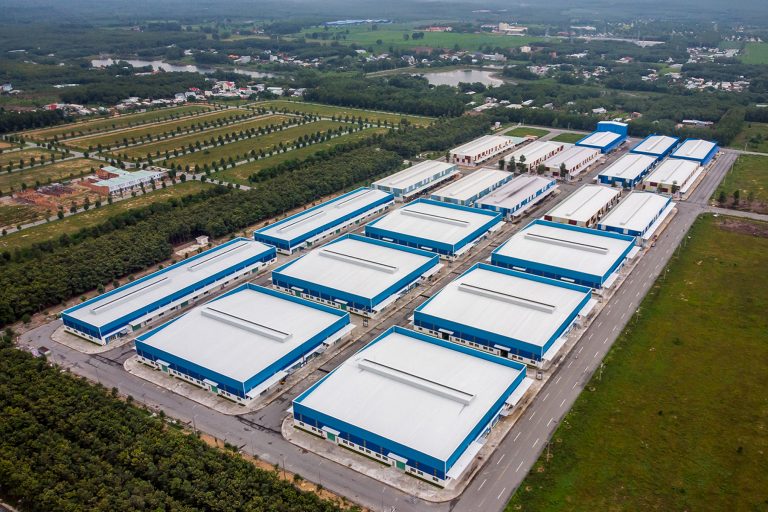[5 min read]
The following article will discuss the reasons why added-value from the textile and garment industry to local enterprises is still moderate despite tremendous export turnover in recent years, in addition to the future advantages of investing in the textile and dyeing industry for foreign businesses.
Uneven development of subsectors in the textile industry
Vietnam’s textile and garment industry has consistently ranked among global leaders in recent years. However, enterprises continue to face several challenges in grasping the benefits of the industry’s growing export turnover, which can be attributed to the uneven development of subsectors in the textile industry. The textile industry is composed of a wide number of subsectors, covering the entire production cycle from the production of raw materials (man-made fibers) to semi-processed (yarn, woven and knitted fabrics with their finishing processes) and final products (carpets, home textiles, clothing and industrial use textiles).
Despite growing impressively since 1998 thanks to a series of events to expand relationships and trade cooperation with other countries and territories, Vietnam’s textile and garment industry has not developed equally as the country has focused on scaling up the production of fibers and final products while the production of semi-processed goods has lagged far behind.
The world textile industry is divided into four modes, which are classified from high to low added value as follows:
1. CMT – Cut, Make, Trim
2. OEM/FOB – Original Equipment Manufacturing/Free On Board
3. ODM – Original Design Manufacturing
4. OBM – Original Brand Manufacturing
In the case of Vietnam’s textile and apparel industry, its production is mainly based on the CMT method (65%) and FOB method (30%), resulting in the inability to produce wholly obtained products as well as low added value products. Therefore, the surplus value gained by domestic enterprises in this industry is relatively low and still mainly dependent on the country’s cheap labor advantage.
Future advantages
The Comprehensive and Progressive Agreement for Trans-Pacific Partnership (CPTPP) that came into effect in January 2019 has gradually removed tariffs on a range of key export products, including textiles and apparel. However, the export turnover of textiles and garments in 2019 was only around USD39bn — US1bn lower than its target. In December 2020, the European Parliament officially approved a free trade agreement between Vietnam and European Union (EVFTA) with the commitments to abolish nearly 100% of import duties as agreed by the two sides. However, Vietnam’s textile and garment industry continues to encounter a number of difficulties in the practical implementation of FTAs. In the CPTPP, textile and apparel rules of origin are only applicable to companies having a complete supply chain from yarn onward. However, the number of Vietnamese enterprises that can satisfy the CPTPP origin principle — such as Thanh Cong, Phong Phu Corp and Hanosimex — is very small. Similarly, EVFTA also stipulates that product materials must be sourced from Vietnam or the EU with the cutting and sewing processes taking place on either side.
However, this difficulty opens up opportunities for businesses investing in the textile and dyeing industry in Vietnam.
First of all, as market access increases and tariff commitments come into effect under the CTPPP, textile and garment companies can rapidly increase their exports to many member countries. Secondly, the industry’s core advantage is the low labor costs compared to other regional countries such as Thailand and Malaysia (you can refer to the regional minimum wage HERE). Finally, as Vietnam’s textile and garment industry has gained competitive advantages in the fields of fiber production and garment manufacturing over the past 20 years, the apparel supply chain will become complete when fabric production and dyeing projects come into operation.
In terms of regional factors, the Ministry of Industry and Trade has drafted a master plan for Vietnam’s textile industrial development through 2020 — with a vision to 2030 — to orientate production toward the South of Vietnam. The southern market possesses the advantage of an abundant and skilled workforce as well as high consumption, which are are motivations for future growth of Vietnam’s textile and garment industry.
Pham Quang Anh, CEO of Dony Garment Company Limited, said that businesses like his are benefiting from COVID-19 because the supply chain from China has been impacted. Previous customers who transitioned Chinese manufacturers due to lower prices are now returning to Dony.
In addition, Vietnam’s success story in containing COVID-19 along with the millions of Vietnamese-made masks being exported to other countries are proving the safety and workmanship of Vietnamese garment enterprises.




